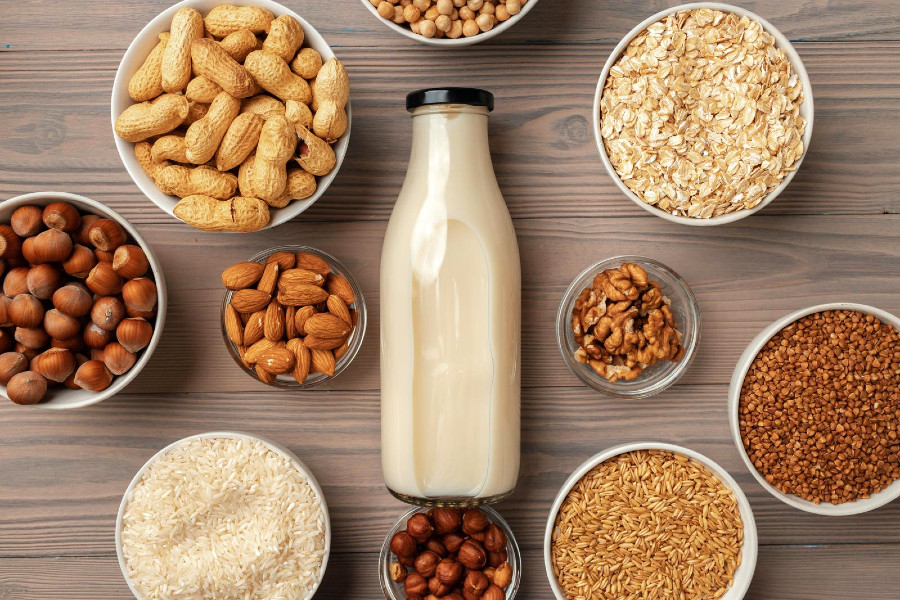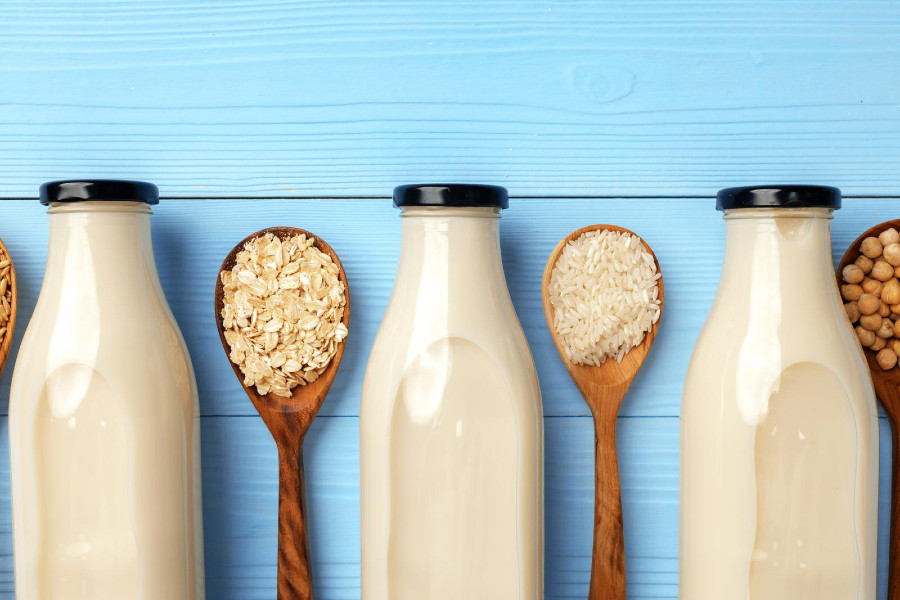Menopause Mood Swings: A Holistic Approach
- 0 comments
- by Loren
Menopause and mood swings are very common on a woman’s menopause journey. These emotional menopause rollercoasters can make this phase challenging. In this article, we’ll discuss the dynamics of menopause and mood swings, and provide practical solutions to help you find balance and relief.

Mood swings, those unpredictable shifts from tears to laughter and back again. Menopausal mood swings refer to rapid and intense changes in emotions, often accompanied by irritability, sadness, anxiety, depression, tears, or anger. These emotional pendulum swings are closely tied to the hormonal fluctuations that accompany menopause.
Menopausal Mood Swings: Understanding the Role of Estrogen and Progesterone
Hormones play a pivotal role in regulating not only your bodily functions but also your mood. Two key players in this hormonal symphony are estrogen and progesterone.
- Estrogen, often dubbed the “feel-good” hormone, promotes the production of serotonin, a neurotransmitter associated with happiness and emotional stability. When estrogen levels fluctuate, so does your serotonin, which can lead to mood swings.
- Progesterone, on the other hand, has a calming effect, helping you to feel balance and at peace. A drop in progesterone during menopause can leave you feeling more irritable and anxious.
During menopause, hormonal changes are a given. Estrogen levels decline significantly, and progesterone may follow suit. These fluctuations can disrupt the delicate balance in your brain, leading to mood swings that can range from mild irritability to more pronounced emotional ups and downs. Some of my clients tell me that they thought they were going crazy; they couldn’t function at work and created a lot of problems in their families. If you are feeling like this, don’t worry, there are solutions.

Which Menopause Mood Swings are normal?
Mood swings are like intruders, creeping into your life without warning. To effectively address them, it’s crucial to first identify the common signs and symptoms (get my free menopause symptoms tracker). Menopausal mood swings can manifest as:
- Irritability: You may find yourself getting annoyed or frustrated more easily, even over minor issues.
- Unpredictable Emotions: You might experience sudden and intense mood changes, swinging from happiness to sadness or anger. Short episodes of depression or anxiety.
- Heightened Sensitivity: Situations or comments that didn’t used to bother you may now trigger strong emotional responses.
It’s important to note that while mood swings can be a symptom of menopause, they are different from other emotional symptoms like anxiety or depression. Mood swings tend to be shorter in duration, often lasting minutes to hours, and are typically triggered by specific events or stressors. On the other hand, anxiety and depression are persistent mood disorders that can affect your overall emotional well-being.
Additional Causes of Menopausal Mood Swings
While hormonal fluctuations are a key player in menopausal mood swings, they aren’t the sole culprits. Several other factors can exacerbate these emotional rollercoasters. Understanding these contributing factors can help you take a more holistic approach to managing mood swings during menopause. It is very important to track these symptoms to uncover culprits because they vary from person to person (get my free tracker). Some of these factors include:
- Stress: Menopause coincides with various life changes, and stress can amplify mood swings. High stress levels can make it more challenging to regulate emotions.
- Sleep Disturbances: These are common during menopause and can leave you fatigued and emotionally fragile, making mood swings more pronounced.
- Diet and Nutrition: Your dietary choices can impact your mood. High sugar and caffeine intake, for example, can lead to energy spikes and crashes, affecting your emotional stability.

Finding Balance
Menopausal mood swings are difficult, but you’re not powerless. There are practical coping strategies that can help you regain control and emotional balance. Here are some tips to consider:
- Lifestyle Changes: Simple adjustments to your daily routine, like regular exercise, adequate sleep, and a balanced diet, can have a profound impact on your mood.
- Stress Reduction Techniques: Incorporate stress management practices into your life, such as praying, journaling, meditation, deep breathing exercises, and mindfulness. These techniques can help you respond to life’s challenges with greater calm and resilience.
You Don’t Have to Navigate This Alone
For some women, mood swings during menopause can be particularly challenging to handle. If you find yourself overwhelmed, don’t hesitate to seek support. Here’s how:
- Healthcare Professionals: If your mood swings are severe and impacting your daily life, consider consulting your doctor. They can offer prescribe medical treatments or therapies that may be beneficial including hormonal replacement therapy (HRT or BHRT) and additional medicines. For some of my clients HRT or BHRT have been necessary and in some cases urgent. A healthy lifestyle can enhance the effectiveness of these treatments. Consider my program, “BLISS in Menopause,” for guidance on achieving a healthy and balanced menopausal journey.
- Support Groups: Joining a menopause support group can connect you with others experiencing similar challenges.
- Open Communication: Don’t underestimate the importance of talking to your loved ones about your experience. They can provide emotional support and understanding during this phase.
Natural Remedies and Treatments for mood swings in menopause
Consider the following options:
- Dietary Adjustments: Some foods, like those rich in Omega-3 fatty acids, can help stabilize mood. Reducing caffeine, alcohol and sugar intake can also have a positive impact.
- Herbal Supplements: Certain herbs, such as St. John’s Wort and black cohosh, are believed to alleviate mood swings. Flax seeds work well for some people. There are many over the counter menopause aids that can help. Consult a healthcare provider before using these supplements, especially if you are taking other medicines.
- Exercise: Regular physical activity not only boosts your overall well-being but can also help regulate mood by releasing endorphins, your body’s natural mood lifters.
- Spend time in nature. It is great to relax, detox and get fresh air. A daily walk can be great to improve your mood and hormonal balance.
Inspiring story: Beth’s story
Beth, one of my clients, is a 49-year-old woman who has always been very active and led a relatively healthy lifestyle. As she hit menopause, she started experiencing radical mood swings and hot flashes. Within months, she found herself unable to work. She couldn’t hold a conversation without becoming angry and emotional.
Beth was feeling awful, but she couldn’t control her emotions. The situation was urgent. I recommended her to see a doctor. She needed medication to address her symptoms quickly, including hormone replacement therapy (HRT). HRT takes time to show results, sometimes several months, Beth couldn’t wait so the doctor prescribed anti-anxiety medication along with HRT.
Beth was already following a healthy diet, I made modifications to her exercise program and provided stress management and coping techniques. After a few weeks, Beth returned to a state of relative normalcy, allowing her to adopt a lifestyle to support her through menopause.
Conclusion:
Menopause and mood swings are an intricate dance of hormones and emotions, but they need not define this chapter of your life.
- Mood swings during menopause are common and related to hormonal fluctuations. Identifying the triggers of mood swings is crucial to address them effectively.
- Coping strategies, natural remedies, and support systems can make a significant difference in managing mood swings.
- In cases of severe mood swings, many women need medical interventions like hormone replacement.
As you navigate this phase of life, remember that embracing menopause as a natural transition is empowering. Join my Facebook community and mailing list to keep in touch.
























